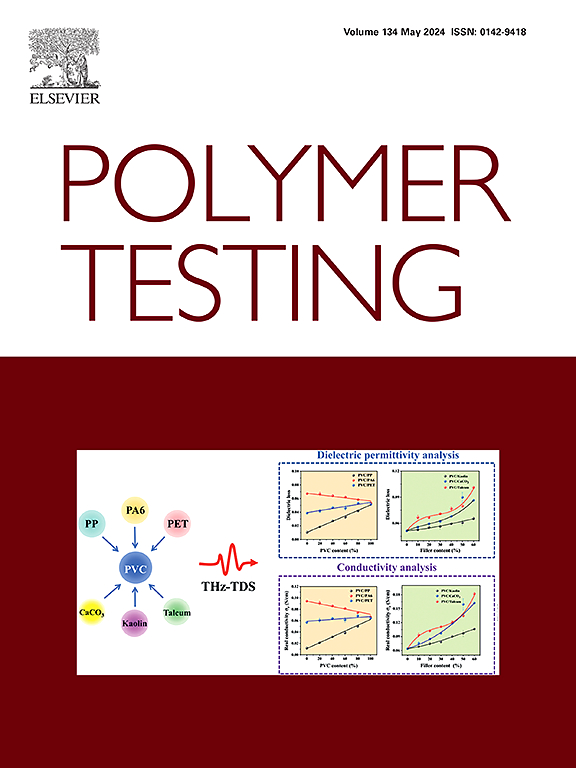空间环境因素对弹性体微纹干胶性能的影响
IF 6
2区 材料科学
Q1 MATERIALS SCIENCE, CHARACTERIZATION & TESTING
引用次数: 0
摘要
本研究以壁虎脚的粘附为灵感,探讨了空间环境因素对聚氨酯(PUR)和聚二甲基硅氧烷(PDMS)制成的微图纹干胶粘剂(MDA)的影响。这些粘合剂有望用于低地球轨道(LEO)的自动对接和碎片捕获。该研究在500公里的太阳同步轨道上模拟了一年的热真空(TVAC)、紫外线(UV)辐射和原子氧(ATOX)暴露。随后的附着力测试表明,pms基样品在UV和TVAC下保持适度的附着力,但由于氧化硅的形成,在ATOX下明显降解。基于pur的样品在暴露于ATOX后失去大部分附着力,并且在暴露于紫外线后由于光氧化而几乎完全失去附着力。有趣的是,PDMS样品先经过紫外线处理,然后再经过ATOX处理,显示出更好的附着力,可能是由于ATOX侵蚀损坏的材料并暴露原始PDMS。除了变黄外,扫描电镜分析还显示了MDA结构的进一步形态学变化,如MDA柱的粗化和开裂,从而导致附着力损失。较大的400µm微结构比较小的50µm微结构具有更好的回弹性。这些发现表明,具有更大结构特征的基于pdm的MDA可能适用于低轨道任务,而基于pur的MDA则需要强大的紫外线防护。建议进一步进行直接的空间试验,以评估在现实和同时暴露条件下的长期MDA性能。本文章由计算机程序翻译,如有差异,请以英文原文为准。
Impact of single and combined space environment factors on the performance of elastomer micropatterned dry adhesives
This study explores the effects of environmental factors in space on micropatterned dry adhesives (MDA) made from polyurethane (PUR) and polydimethylsiloxane (PDMS), inspired by the adhesion of gecko feet. These adhesives are promising for automated docking and debris capture in low Earth orbit (LEO). The research simulated a one-year exposure to thermal vacuum (TVAC), ultraviolet (UV) radiation, and atomic oxygen (ATOX) in a 500 km, sun-synchronous orbit. Subsequent adhesion tests revealed that PDMS-based samples retain moderate adhesion under UV and TVAC but degrade significantly with ATOX as a result of silicon oxide formation. PUR-based samples lose most of their adhesion after exposure to ATOX and suffer near-total adhesion loss after exposure to UV rays due to photooxidation. Interestingly, PDMS samples subjected first to UV and then to ATOX show improved adhesion, presumably due to ATOX eroding damaged material and exposing pristine PDMS. In addition to yellowing, scanning electron microscopy analysis shows further morphological changes in MDA structure such as roughening and cracking in MDA pillars that contribute to adhesion loss. Larger 400 µm-microstructures showed better resilience than the finer 50 µm-microstructures. These findings suggest that PDMS-based MDA with larger structural features may be viable for LEO missions with limited shielding, whereas PUR-based MDA would require robust UV protection. Further direct in-space tests are recommended to assess long-term MDA performance under realistic and simultaneous exposure conditions.
求助全文
通过发布文献求助,成功后即可免费获取论文全文。
去求助
来源期刊

Polymer Testing
工程技术-材料科学:表征与测试
CiteScore
10.70
自引率
5.90%
发文量
328
审稿时长
44 days
期刊介绍:
Polymer Testing focuses on the testing, analysis and characterization of polymer materials, including both synthetic and natural or biobased polymers. Novel testing methods and the testing of novel polymeric materials in bulk, solution and dispersion is covered. In addition, we welcome the submission of the testing of polymeric materials for a wide range of applications and industrial products as well as nanoscale characterization.
The scope includes but is not limited to the following main topics:
Novel testing methods and Chemical analysis
• mechanical, thermal, electrical, chemical, imaging, spectroscopy, scattering and rheology
Physical properties and behaviour of novel polymer systems
• nanoscale properties, morphology, transport properties
Degradation and recycling of polymeric materials when combined with novel testing or characterization methods
• degradation, biodegradation, ageing and fire retardancy
Modelling and Simulation work will be only considered when it is linked to new or previously published experimental results.
 求助内容:
求助内容: 应助结果提醒方式:
应助结果提醒方式:


